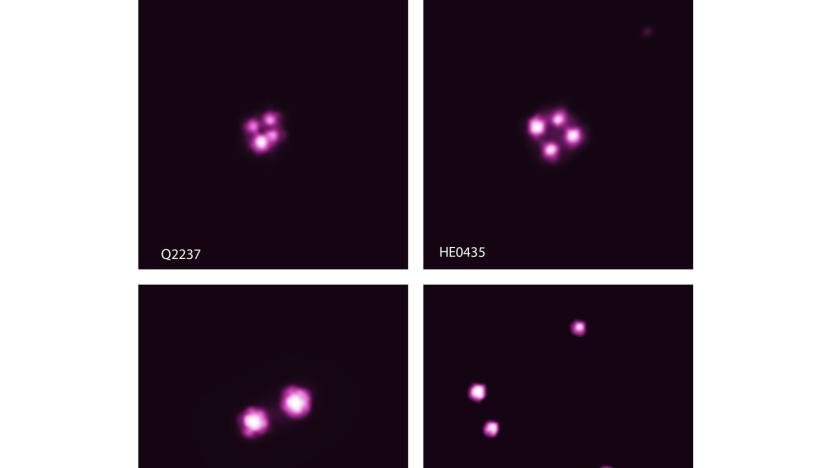chandra
Latest

X-rays help astronomers detect spinning black holes
It can be tricky to measure the spin of a black hole, particularly when it's hard to see them, but astronomers have pulled off just such a feat. They've gauged the spins of five supermassive black holes through a combination of data from the Chandra X-ray Observatory and gravitational lensing, or the use of gravity from celestial bodies to magnify very distant objects.

NASA's Chandra telescope follows Hubble into a shutdown
NASA sure hasn't been having a great time with its telescopes. The Chandra X-ray Observatory has gone into safe mode and halted all its science operations a few days after Hubble shut down due a gyroscope failure. According to the agency, Chandra's transition into safe mode was possibly triggered by an issue that also has something to do with its gyroscope, the component in charge of pointing and stabilizing the telescope.

Watch a 450-year-old supernova continue to bloom
Back in 1572, a white dwarf's explosion shone brightly on the sky. It was visible to the naked eye, and astronomers like Tycho Brahe were able to monitor the event despite not having the equipment we do today. We might have missed the chance to see what's now known as Tycho's supernova, but thanks to Chandra X-ray observatory's data, we can see its remnant continue to bloom almost 450 years later. A group of astronomers compiled Chandra's observations from the year 2000 to 2015 to create a video showing its ongoing expansion.

A supermassive black hole is shooting X-rays across galaxies
NASA doesn't often compare things to a Death Star, but a phenomenon observed by its Chandra X-ray Observatory apparently qualifies. The composite image above shows a supermassive black hole that is continuously stripping material from nearby stars and other objects with its enormous gravity. When the material hits the "event horizon," a massive gravitational blast produces a particle jet that spans nearly 300,000 light years, three times the width of the entire Milky Way galaxy. That amount of power is pretty alarming, but luckily it's around 500 million light years away from us in the Pictor A galaxy.


